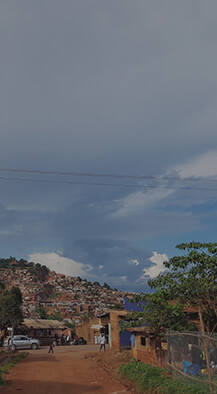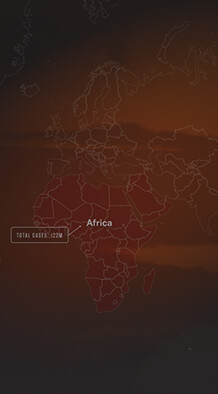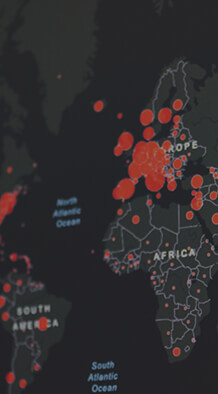

Ebola in Nigeria
However, humans can, and have, improved their ability to fight back.
In mid-2014, West Africa was in the grip of the largest epidemic of Ebola the world had ever seen. While the epidemic had primarily taken hold in Liberia, Guinea and Sierra Leone, countries across West Africa were on high alert. On July 20, 2014, a man infected with Ebola landed in Lagos, Nigeria, a city of 21 million. Infections began to spread immediately. By the end of the month, the first patient had died, an infected individual had flown to another city and nearly one thousand contacts had been exposed to the virus.
And yet, in Nigeria, the outbreak was over in less than three months. Thanks to a herculean public health response, Nigeria was free from Ebola by October 2, after 20 cases and eight deaths total in the country.3
Nigeria stopped Ebola from spreading nationally, and potentially regionally, with effective communication, coordinated response activities and dedicated leadership.


WE CAN STOP EPIDEMICS BEFORE THEY HAPPEN
In these case studies, we highlight the successes of these epidemics that weren’t.
In this report, we share inspiring stories of Epidemics That Didn’t Happen, or whose impact was lessened, because of careful planning and swift strategic action. These Epidemics That Didn’t Happen show us how the trajectory of an epidemic can be fundamentally altered when a country invests in and prioritizes preparedness for infectious disease outbreaks and readiness to act when it strikes.
As the world continues to work to stop COVID-19 and better prepare for the next disease threat, these stories serve as a reminder that we can do better. By investing in and prioritizing preparedness and response systems, we can save millions of lives and trillions of dollars and avert global tragedy in the years to come.
The COVID-19 pandemic revealed gaps in response systems across high, middle- and low-income countries – it is vital leaders across the world assess, and more importantly, improve, governance for public health emergencies. These examples demonstrate that preparedness works.
Chapter 02
Yellow Fever In Brazil
Chapter 03
Ebola In Uganda
Chapter 04
Anthrax In Kenya
Chapter 05
Monkeypox In Nigeria

How Does This Relate to COVID-19?
In contrast, the COVID-19 pandemic has largely been a story of failure. The pandemic revealed tremendous gaps in many countries’ preparedness and response systems, including the United States’. But this does not mean that effective preparedness and response are out of reach. COVID-19 offers reason for hope in countries that have had successful responses that should also be recognized. Senegal, which still has significant preparedness gaps, used their years of outbreak response—particularly their experience with Ebola—along with data-driven policies and strong leadership to manage a highly effective response. And Senegal is not alone; countries such as Vietnam and Mongolia have, despite limited resources, mounted effective responses and kept COVID-19 under greater control than much of the rest of the world. Both have seen some of the lowest infection and death rates in the world.
The bottom line is many countries have demonstrated what works: strong preparedness systems coupled with decisive responses. When countries can prepare and respond appropriately, even if not perfectly, their communities, neighbors and the world are safer for it.

The COVID-19 pandemic has largely been a story of failure. The pandemic revealed tremendous gaps in many countries’ preparedness and response systems, including the United States'.
Global COVID-19 Cases
References
- Centers for Disease Control and Prevention. (2021). History of Smallpox | Smallpox | CDC. https://www.cdc.gov/smallpox/history/history.html
- World Health Organization. (2011). Smallpox: Eradicating An Ancient Source. Bugs, Drugs and Smoke: Stories from Public Health, 1–21. https://www.who.int/about/bugs_drugs_smoke_chapter_1_smallpox.pdf
- Centers for Disease Control and Prevention. (2019). 2014-2016 Ebola Outbreak in West Africa | History | Ebola (Ebola Virus Disease) | CDC. https://www.cdc.gov/vhf/ebola/history/2014-2016-outbreak/index.html










